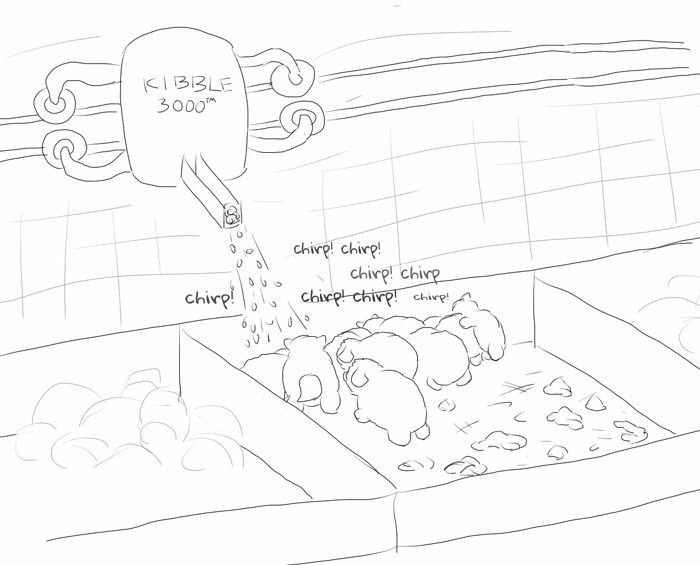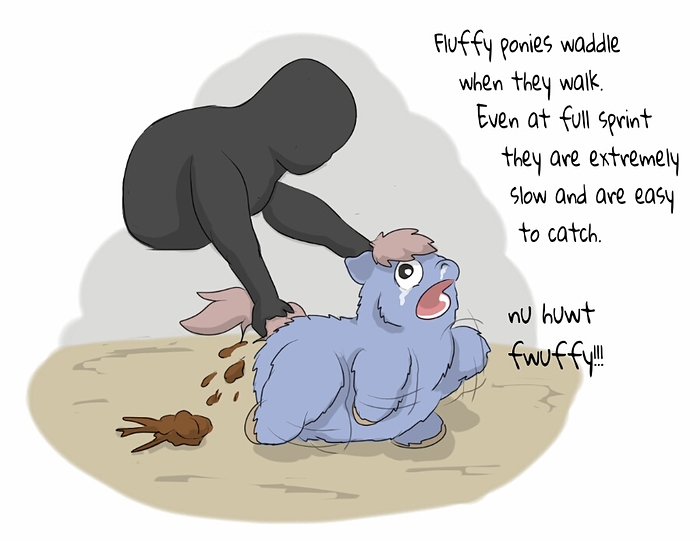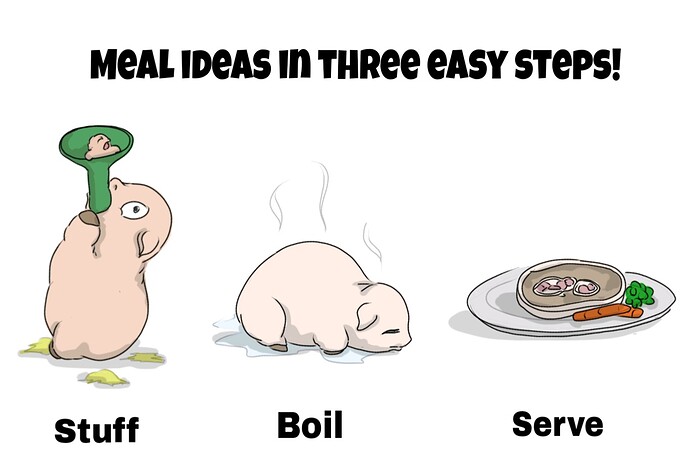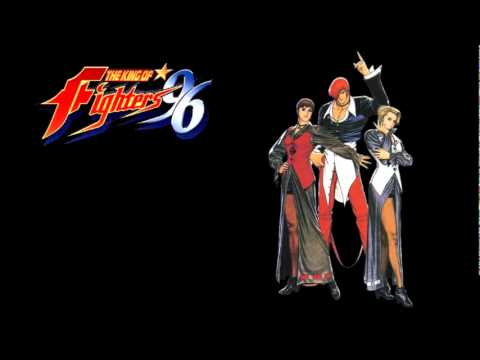Mature News - The Last Fluffy Meat Farms in America
~alternatively titled “Why is fluffy meat so expensive?”~
by Oculus, with Art by Carpdime
On the outside, this looks like any ordinary barn of a farm. However, this particular farm is anything but ordinary.
The men who work at this farm have to wear a special voice modulator, which prevents them from speaking any known human language, inclusive of fluffspeak. Instead, the voice modulator transforms the speaker’s commands and speech into the equivalent in pig squeals. In addition, most of the work done on this farm is handled by robots, with the few human works maintaining as little contact with the produce as possible.
So you may be asking, what kind of farm goes to such lengths to handle its produce?
I am currently at a farm in Pennsylvania to visit one of the last farms in America to specialize in the rearing and production of fluffy pony meat.
~
About two decades ago, fluffy ponies were introduced by Hasbio as an intelligent “biotoy”. The product got so popular that Hasbio had to ramp up production of fluffy pony numbers in order to meet demand. However, and following the onset of the Second Great Depression, demand of fluffy ponies fell drastically, as their requirements as an intelligent ‘biotoy’ made them too pricey for even the average consumer. With the rather sudden closure of Hasbio, hundreds of thousands of the biotoys were not culled, contributing to their growing numbers throughout the developed world as they started raiding agricultural properties and homes.
It was during the Depression that the market for fluffy pony meat flourished. As they were still considered a biotoy, they were not bound by animal cruelty laws, nor were they considered taboo for consumption like cats and dogs. Breeds like the Carpdime, Buwwito and Babbehteef were prized for their physiological similarities to the domestic swine, and thus were hunted and cultivated.
However, and years after the Depression ended, the consumption of fluffy ponies went into decline as public perception on fluffies changed. After the irresponsible and excessive production of fluffies by Hasbio was exposed, legislation was passed to focus on more ethical and controlled breeding of fluffies. In addition, fluffies started gaining recognition as a sentient pet due to their ability to speak the human language of fluffspeak, making them popular again as domestic animals, a stark contrast to their previous discrimination as an invasive species and a pest. As more people started adopting fluffy ponies as pets, the thought of consuming them as produce became more controversial. Following the definition of fluffies as a “humanlike” animal in 2051, the sale and ban of fluffy meat was prohibited in almost all states except for Pennsylvania, South Carolina and Hawaii. However, even the production of fluffy meat in these states is heavily regulated, and follows specific protocol.
~
This is Tim. Tim is not his real name, but he is one of the few farmers willing to give an interview regarding his fluffy pony livestock. He, however, asked for his identity not to be disclosed.
Tim: “I got into the production of fluffy pony meat rather late, as the meat had become increasingly taboo. However, there was a high market price for fluffy pony meat, due to the unique nature of the meat, as well as they was prepared. Sensing an opportunity, I jumped in.”
“Were you prepared for the difficulties involved in rearing fluffy ponies?”
Tim: “I wasn’t. It was a bit of a culture shock when I learnt what was needed to separate a “pet” fluffy pony from a “livestock” fluffy pony.”
Foals of fluffies ponies that have been marked to be raised as livestock are not born naturally. Like other livestock marked for human consumption, they are grown in specialized artificial wombs. Upon maturing, these fluffy pony foals are raised by robots in various pens, where they are first fed a specialized milk formula in their first few months. Upon reaching two months of age, their diet is then changed to kibble. During this period when they start developing their vision, the foals are exposed to various television monitors that depict fluffies similar to them, but making pig and animal noises. After a while, these fluffies will mingle with domestic pigs and porses to ensure that the fluffies do not develop a human language. At every state of their development, an emphasis is made on ensuring that these fluffies do not develop the ability to speak a human language.
But why this emphasis?
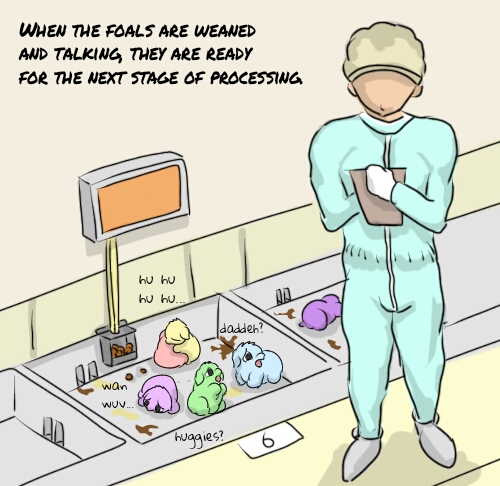
Terry: “One of the biggest problems about rearing fluffies is the fact that they could speak and reason in a human language, that being Fluffspeak. Fluffies were designed by Hasbio to be able to learn and develop a simple human language based on interaction. This is the reason why fluffy pony foals that are raised naturally, whether it is by human owners or feral parents in the wild, are able to speak from a young age – it is comparable to a human toddler slowly picking up a language after continuous communication with their caretakers.”
This is Terry Bogart. Terry is the Deputy Director of the United States Fish and Wildlife Service, and he was also one of the people responsible for managing fluffy populations until manageable, while also campaigning for their status as a “humanlike” animal.
Terry: “The thing about fluffy ponies is that, when they were first introduced by Hasbio, they were marketed as a “biotoy”. However, it was later revealed that fluffies are actually an animal, specifically a genetic chimera comprised of a variety of different animal DNA. They were also the product of extensive research into language patterns in animals and humans. Following the proliferation of Fluffspeak in the early 21st century, fluffies were developed by Hasbio to be able to speak this particular basic language.
It is this ability to pick up a language that made rearing fluffies difficult after the Depression. During the depression, there were cases of people who started hunting fluffspeaking humans as well as fluffies. After the Depression ended, farmers who were raising fluffy ponies naturally, that is letting them learn the language, often complained about growing too attached to their livestock. There was the case of Soiree Meyer, a farmer who gunned down his workers at his farm and released the fluffies into the wild before committing suicide. Also, the Annual Fluffy Hunt in South Carolina, which was popular during the Depression, was stopped after the first incident in 2045, when a hunter gunned down the various family participants of The Hunt, followed by the second incident in 2046 when rioting fluffy pony right activists engaged in a weeklong gunfight with the hunters participating in the event.
Shermie: “It was generally agreed that fluffies were basically “too human”. So what we ended up doing was taking an animal that was engineered to act like a human, and had to teach it how to be swine.”
This is Shermie. She’s from NEST, which was set up by ex-Hasbio members after that company folded during the Second Depression.
Shermie: “Due to their categorization as a “biotoy”, various language deprivation experiments were conducted on fluffies by Hasbio. This included raising fluffies with a nonspeaking robot for over two years, as well as raising them with a robot that conversed with them only in animal sounds.
The results were interesting. When deprived of fluffspeak or even the presence of normal speaking humans, the fluffies did not develop a human language. However, they still demonstrated humanlike activities and mannerisms due to the presence of humans.
This was noticeable even a year after they were raised as foals. There have been cases in human history of feral humans who, upon reconnecting with society, were able to pick up a human language, but suffered from a learning disability in their language acquisition, such as the inability to learn grammar. Fluffies who do not learn fluffspeak as a foal will have these same problems, so it was generally agreed that, for fluffies that were to be raised as livestock, they had to be deprived of toys and objects that would initiate a curiosity and potential language development in these fluffies.”
~
The main breed used at these farms are the popular Carpdime breed. But why Caprdimes specifically?
Tim: “Carpdime fluffies are very close in structure to a pig. They are famous for their voracious appetite, as well as their rather rotund body. Carpdimes are also easier to manage and contain, as they cannot run very fast, so a worker can catch one if it tries to escape.”
Tim proceeds to show us a slab of fluffy meat from a recently slaughtered Carpdime fluffy.
Tim: “See how well-marbled the meat is? You won’t get this kind of meat from a Coalheart or a Waggytail.”
But who exactly purchases fluffy meat? After all Fluffy meat is currently banned in most states of the United States, and as such its rarity has made it extremely expensive.
The Yamazaki restaurant in Harrisburg, Pennsylvania is one of the few restaurants in the world that serves fluffy pony meat, primarily to upper market clientele. But what is the appeal of eating this dish to the proprietor Kuro Yagami, who is a gastronomist that specializes in exotic tastes?
Kuro: “It’s a really unique flavor. It is like how dog, dolphin and parrots all have a unique taste. Fluffies, being a chimeric mix of simian, porcine and equine DNA means that they have a unique flavour profile that no other livestock can offer. Carpdimes are especially interesting because they are similar to swine, despite not sharing most of their DNA.”
Yamazaki offers a few select fluffy dishes, with the most famous being deep fried fluffy hooves and boiled-and-stuffed fluffy.
~
Strong backlash remains against the last fluffy meat farms of the US, and I had the chance to talk to Athena Aasimar. Athena was previously a member of PETA, but shifted over to AWFP after growing disillusioned with the animal rights organization. She has campaigned almost exclusively for fluffy pony rights, arguing that more emphasis should be placed on fluffy welfare, followed by animal welfare.
Athena: “Look, if we’re going to talk about animal sentience, it’s going to take forever. I can point out to you that pigs are capable of using tools, something thought only exclusive to humans. And pigs are considered to be one of the most intelligent animals, yet people will still eat them because they are animals.
But fluffies have the privilege of being able to speak a human language. Fluffspeak was not created by fluffies, it was created by humans, and fluffies were developed to speak a human language. In that sense, fluffies are capable of holding a humanlike conversation at a level far superior to that of an African grey parrot. Eating a fluffy is worse than eating a dolphin or a dog.”
But the fluffies at these farms are taught and raised to be livestock. Surely there is a difference between such fluffies and the average fluffy in our homes?
Athena: Depriving a fluffy of its ability to learn a language, and to force it to live like as though it is an animal, is even more inhumane. There is a reason why language deprivation experiments were considered to be the Forbidden Experiment by Roger Shattuck. Our organization argues that fluffies were design to live humanlike lives, and this approach will do more damage to the fluffies if they were ever released.
What NEST doesn’t tell you, and what we acquired from the Hasbio archive, was that the fluffies who were involved in the language deprivation experiments started developing sociological and psychological problems. Mares who were deprived of motherly contact or learn the language later were found to be incapable of looking after foals, and stallions who had been exposed to these experiments developed a penchant for preying on foals.”
~
Shermie: “It is inhumane. It is the reason why our company created Porses.
Porses, or pork horses, are a genetic chimera that combines the DNA of a horse with that of a pig. Superficially, they look are similar to fluffies, but lack the simian DNA and other genetic markers that allow for them to develop language skills or tool use.
Shermie: Indeed, when placed next to a fluffy, the porse remains silent, while the fluffy keeps trying to engage in a conversation with him.
Ever since their introduction, porse meat has largely replaced fluffy pony meat in the market, as the taste of both meats are rather similar. However, gastronomists like Kuro remains skeptical.
Kuro: “I actually tried porse meat before, and its just not the same. The taste is not there.”
Kuro may soon have to accept that his expensive dish will no longer be available in his restaurant. The Senate is currently reviewing a bill that will outlaw all consumption of fluffy pony meat throughout the US, as most of the fluffy pony farms have switched from the humanlike animal to the more docile porse.
Tim: “It sounds like I’ll be out of a job (laughs). But to be honest, I’m fine with it. Its just how things are - one moment, they’re profitable and the next, is banned. You just move on to the next thing.
I’ve been hearing good words about soylent green – I might move into that instead.”
2061, Mature Media Group. Mature is owned by The Rugal Corporation
